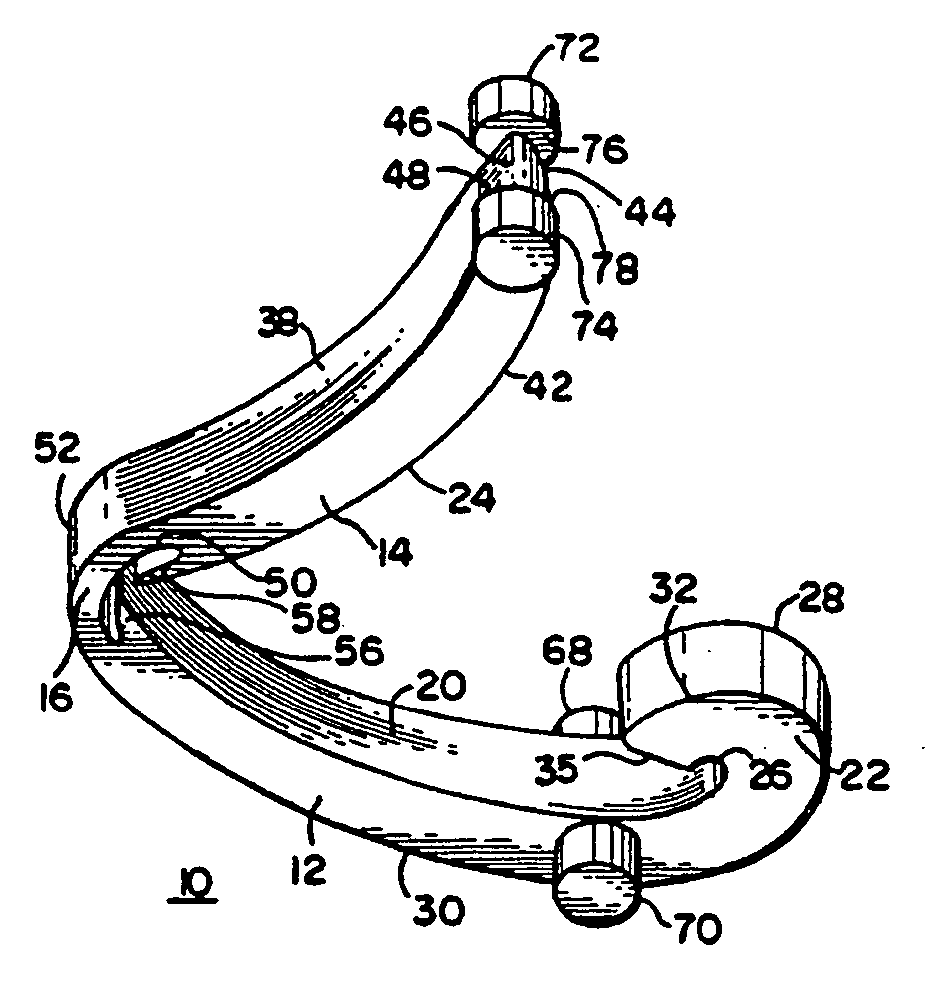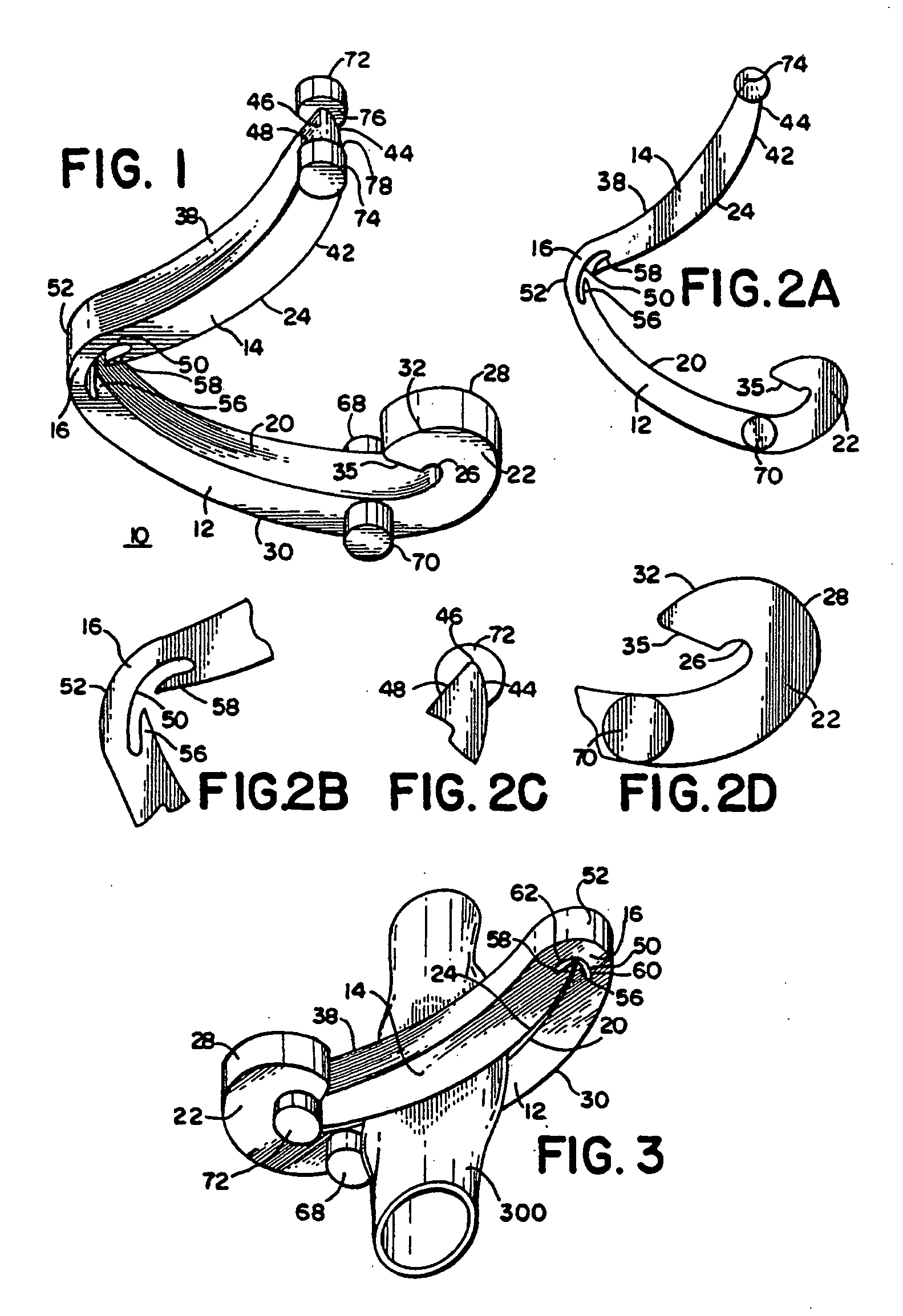Coated ligating clip
a ligating clip and coating technology, applied in the field of medical devices, can solve the problems of limited space and visibility, time-consuming and difficult to perform complex complicated manipulations of surgical threads, so as to reduce friction and stabilize the closing of the clip
- Summary
- Abstract
- Description
- Claims
- Application Information
AI Technical Summary
Benefits of technology
Problems solved by technology
Method used
Image
Examples
Embodiment Construction
[0019] The invention will now be described with reference to the drawing figures, in which like reference numerals refer to like parts throughout. As used herein, the term “polymeric” shall mean an item that is substantially made of a polymer substance. Furthermore, in accordance with conventional practice, as used herein, the term “proximal” or “proximal end” shall refer to the specified end of a device or its component which is generally closer to the medical personnel handling or manipulating the device as it is intended to be used, and the term “distal” or “distal end” shall refer to the specified end of a device or its component which is opposite the proximal end.
[0020] An embodiment in accordance with the present invention provides a polymeric, surgical clip having first and second curved leg members joined at their proximal end by a hinge portion and movable from an open position to a closed position for clamping a vessel between curved opposing inner surfaces. The clip incl...
PUM
 Login to View More
Login to View More Abstract
Description
Claims
Application Information
 Login to View More
Login to View More - R&D
- Intellectual Property
- Life Sciences
- Materials
- Tech Scout
- Unparalleled Data Quality
- Higher Quality Content
- 60% Fewer Hallucinations
Browse by: Latest US Patents, China's latest patents, Technical Efficacy Thesaurus, Application Domain, Technology Topic, Popular Technical Reports.
© 2025 PatSnap. All rights reserved.Legal|Privacy policy|Modern Slavery Act Transparency Statement|Sitemap|About US| Contact US: help@patsnap.com


